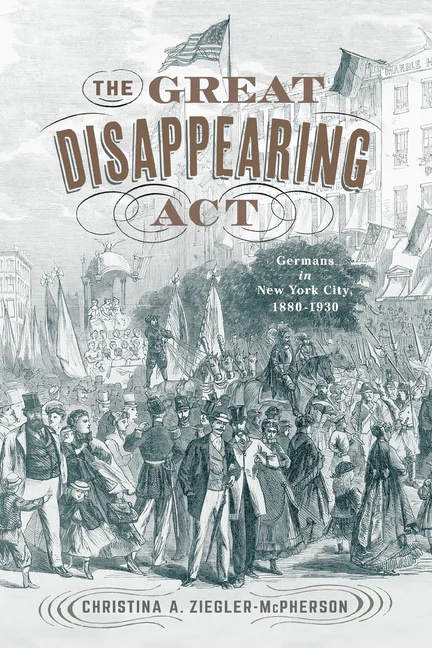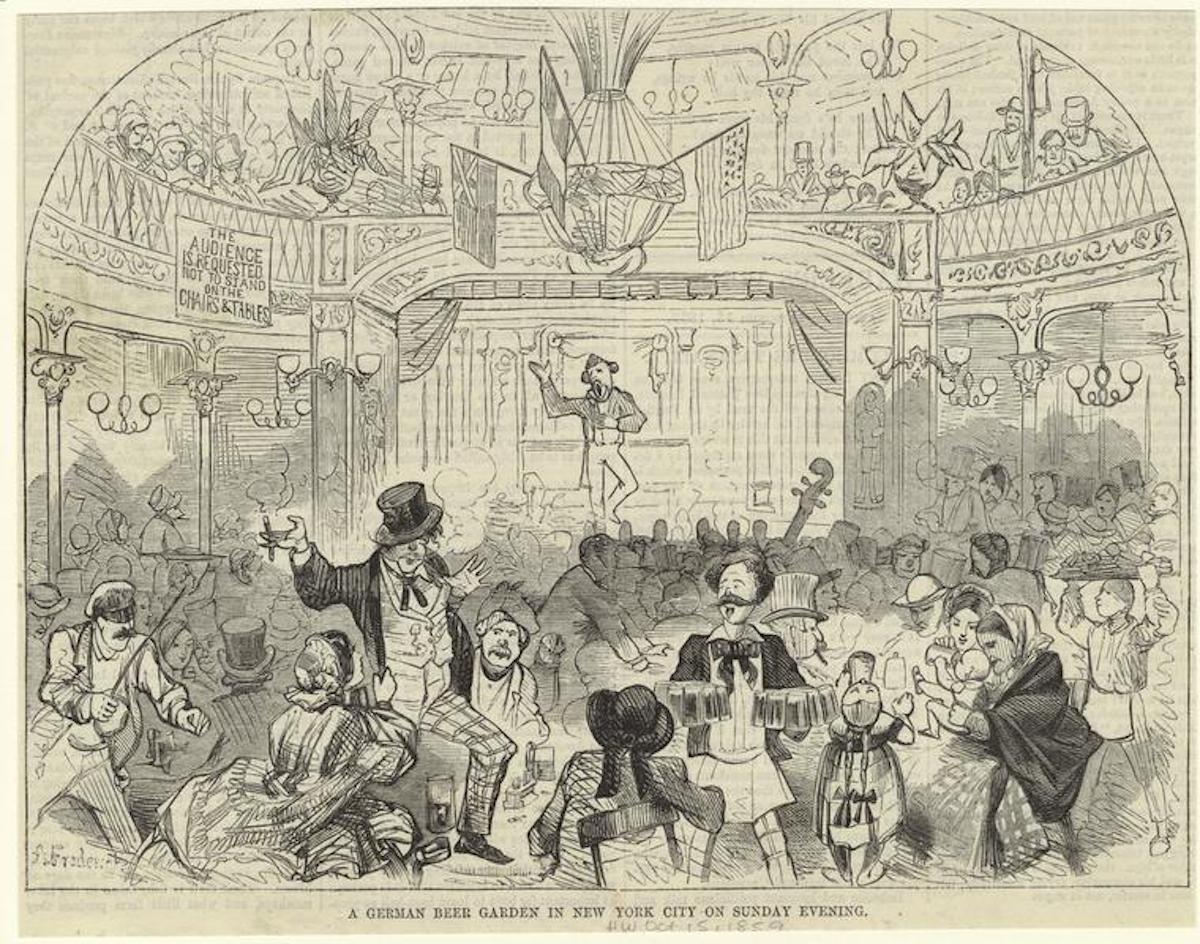In the 1850s, New York City had become the third largest German-speaking capital in the world, topped only by Berlin and Vienna. In just thirty years — since the first significant influx of immigrants in the 1820s — Germans had helped to transform the city’s cultural life.
But today, even as we celebrate a tapestry of ethnic neighborhoods around the five boroughs, that vibrant concentration of German community which once defined New York is essentially gone (barring a few historic businesses in places like Yorkville.)

THE GREAT DISAPPEARING ACT
Germans in New York City 1880-1930
Christina A. Ziegler-McPherson
Rutgers University Press
“Where did all the Germans go?” asks Christina A. Ziegler-McPherson, a German research scientist and public historian, in her new book on the assimilation and ‘disappearance’ of German culture into American life.
Ziegler-McPherson sets up her story with a description of German New York that seems almost unimaginable, a universe of churches, cafes, beer gardens, theaters, newspapers and verein (or social clubs) where German was freely spoken and newly arrived immigrants could revel in a taste of their former homes.
So much German culture has become infused into the American landscape (from common words with German origins to foods like hot dogs and pretzels) because Germans themselves sought to blend in.
For a time Germans — even the most prosperous — saved the space outside their English-speaking interactions for a private life that preserved their former heritage.
“But by the 1880s,” Ziegler-McPherson writes, “fewer Americans of German heritage spoke German (or spoke it well). German Americans’ adoption of English as their primary language continued as the end of the century approached.”
She even dispels a popular theory (one might even call it an urban legend) — that the explosion of the General Slocum steamship in 1904 effectively spelled the end of the former German neighborhood of Kleindeutschland, the original enclave in today’s Lower East Side and East Village neighborhoods.
In truth most Germans were already on the move.
“When the General Slocum burned, New York City’s German community had long been defined more by its institutions than is geographic location, and German New Yorkers had recreated Kleindeutschland all over the city.”
During World War I, most Germans had good reason to disguise their heritage amid suspicion and discrimination after many decades of seeming harmony. “A long process of disappearing into American culture rapidly turned into an effort to hide in plain sight or become invisible.”
By 1930 — long before World War II — vibrant examples of German culture had disappeared in most corners of New York except in isolated neighborhoods (such as Yorkville). But in a way, an outline of its heritage — cultural markings long adopted by the mainstream — still remain.
“Just as Germans became more ‘American,’ so had other Americans become more ‘German,’ and nowhere was this more clearly seen than in New York City.”


2 replies on “In ‘The Great Disappearing Act’, German New York fades into the background”
Great article, Austria is/was not a “capital.”
Oops I meant Vienna. Thanks!